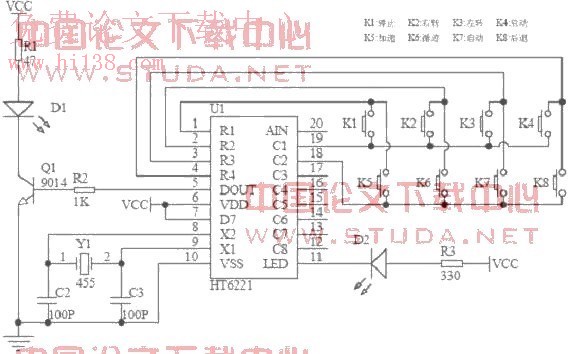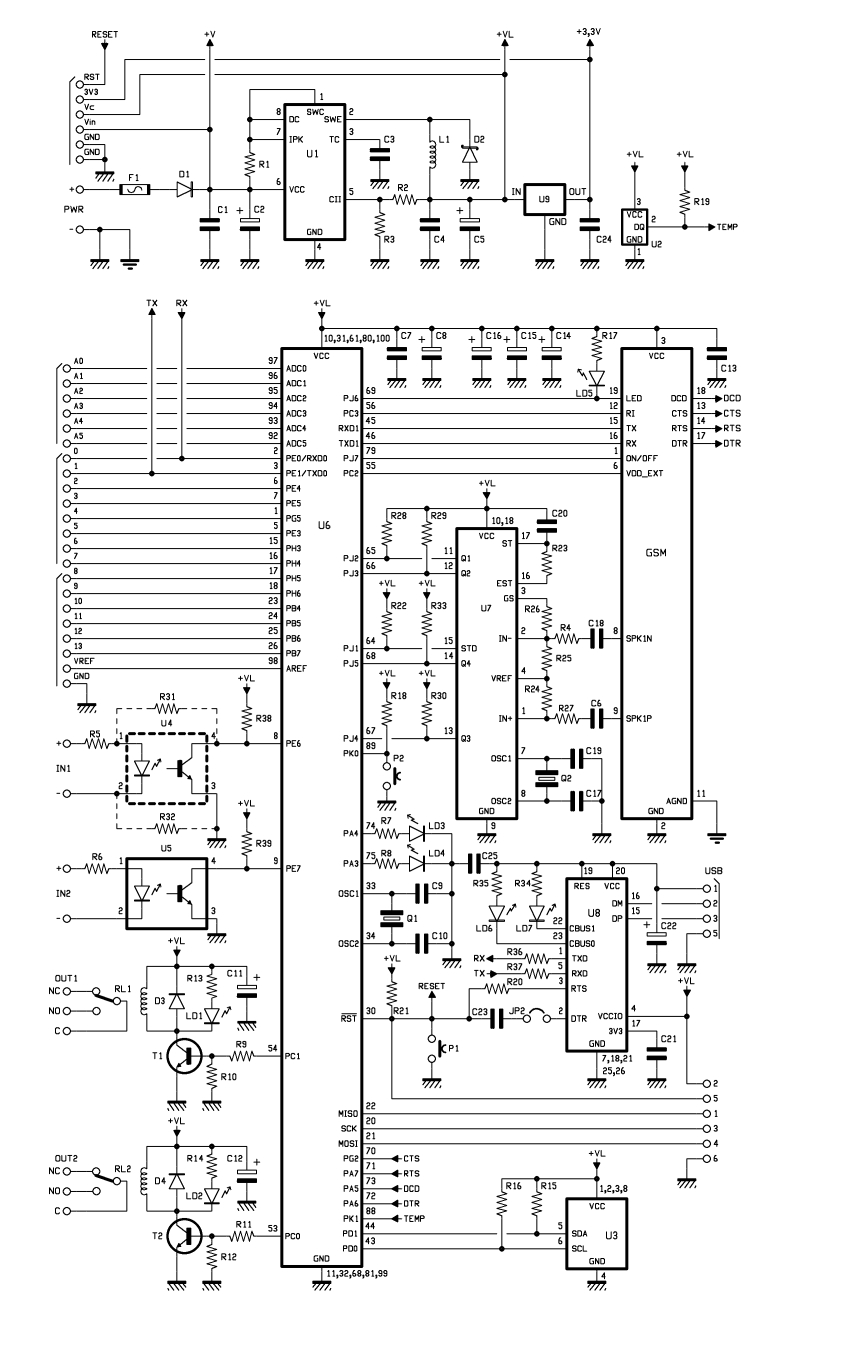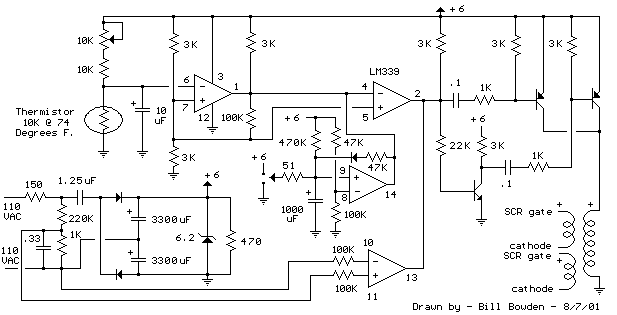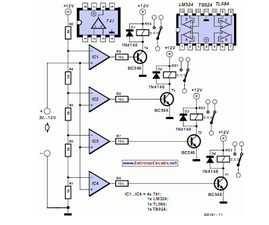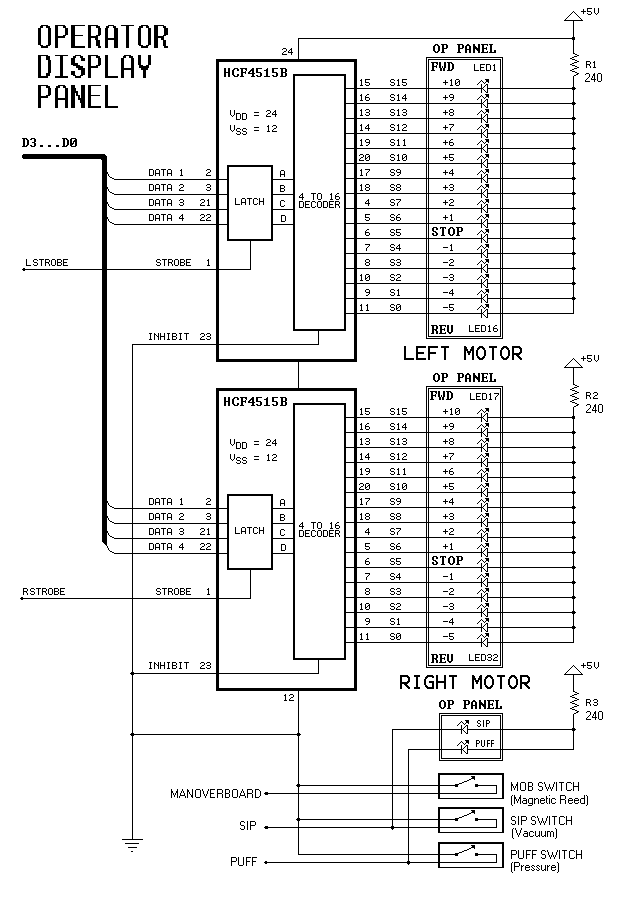
General Infrared Remote Controlled Relay
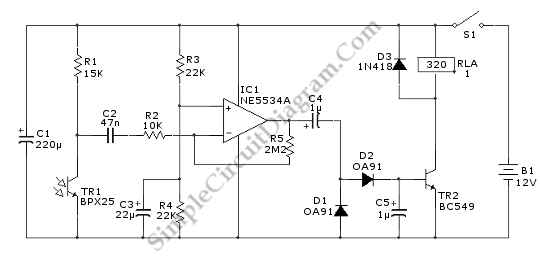
This relay circuit is controlled by nearly any type of infrared remote controller. The circuit operates under the assumption that most remote controllers utilize high-frequency signals.
The relay circuit described functions by receiving signals from an infrared (IR) remote control, which typically operates at a frequency of around 38 kHz. The circuit is designed to decode these IR signals and activate a relay, allowing for the control of various electronic devices.
The core components of the circuit include an infrared receiver module, a microcontroller or a dedicated decoder IC, and a relay. The infrared receiver module detects the IR signals emitted by the remote control. Upon receiving a signal, the module outputs a digital signal to the microcontroller or decoder IC.
The microcontroller processes the received signal and determines the corresponding action based on the specific button pressed on the remote control. This processing may involve simple logic or more complex programming, depending on the desired functionality. The output from the microcontroller is then used to energize the relay coil, which closes or opens the relay contacts, thereby controlling the connected load.
Power supply considerations are crucial for the proper operation of the circuit. The circuit typically requires a regulated power source that can supply the necessary voltage and current for both the infrared receiver and the relay. Commonly used relays can handle various loads, allowing the circuit to control appliances such as lights, fans, or other electronic devices.
In summary, this relay circuit provides a versatile solution for remote control applications, leveraging the widespread use of infrared remote controls to enable wireless operation of electrical devices.This relay circuit is controlled by almost any type of infrared remote controller. This circuit works on assumption that almost all remote controller use high.. 🔗 External reference
The relay circuit described functions by receiving signals from an infrared (IR) remote control, which typically operates at a frequency of around 38 kHz. The circuit is designed to decode these IR signals and activate a relay, allowing for the control of various electronic devices.
The core components of the circuit include an infrared receiver module, a microcontroller or a dedicated decoder IC, and a relay. The infrared receiver module detects the IR signals emitted by the remote control. Upon receiving a signal, the module outputs a digital signal to the microcontroller or decoder IC.
The microcontroller processes the received signal and determines the corresponding action based on the specific button pressed on the remote control. This processing may involve simple logic or more complex programming, depending on the desired functionality. The output from the microcontroller is then used to energize the relay coil, which closes or opens the relay contacts, thereby controlling the connected load.
Power supply considerations are crucial for the proper operation of the circuit. The circuit typically requires a regulated power source that can supply the necessary voltage and current for both the infrared receiver and the relay. Commonly used relays can handle various loads, allowing the circuit to control appliances such as lights, fans, or other electronic devices.
In summary, this relay circuit provides a versatile solution for remote control applications, leveraging the widespread use of infrared remote controls to enable wireless operation of electrical devices.This relay circuit is controlled by almost any type of infrared remote controller. This circuit works on assumption that almost all remote controller use high.. 🔗 External reference
Warning: include(partials/cookie-banner.php): Failed to open stream: Permission denied in /var/www/html/nextgr/view-circuit.php on line 713
Warning: include(): Failed opening 'partials/cookie-banner.php' for inclusion (include_path='.:/usr/share/php') in /var/www/html/nextgr/view-circuit.php on line 713
